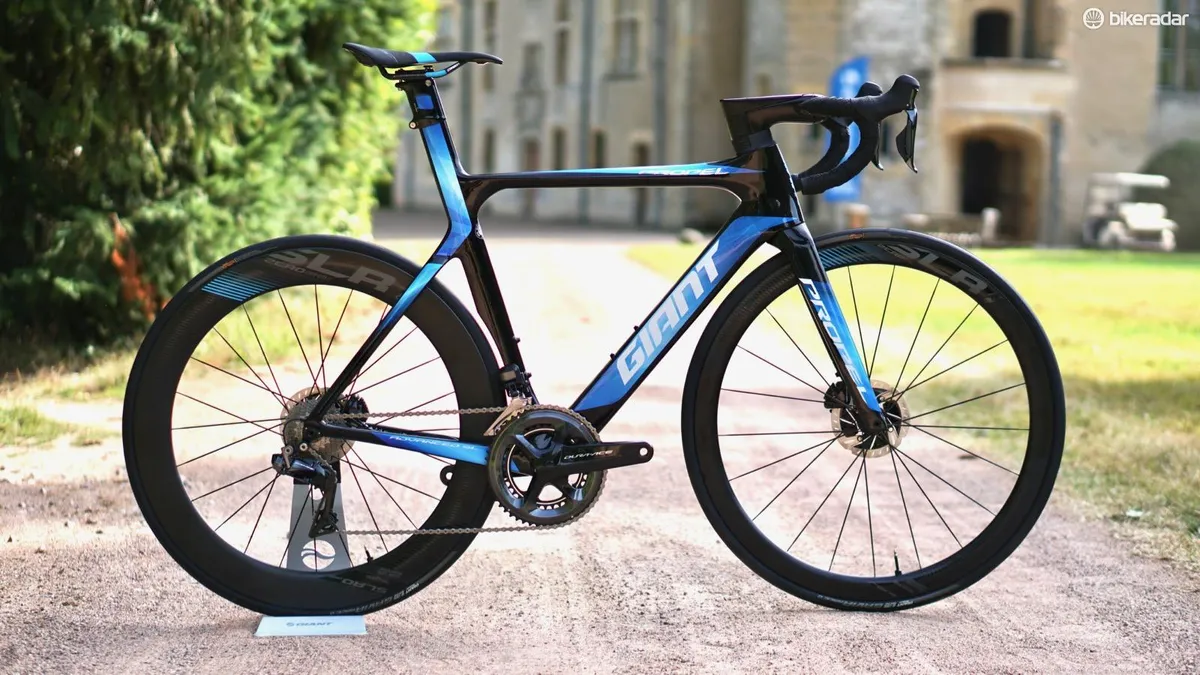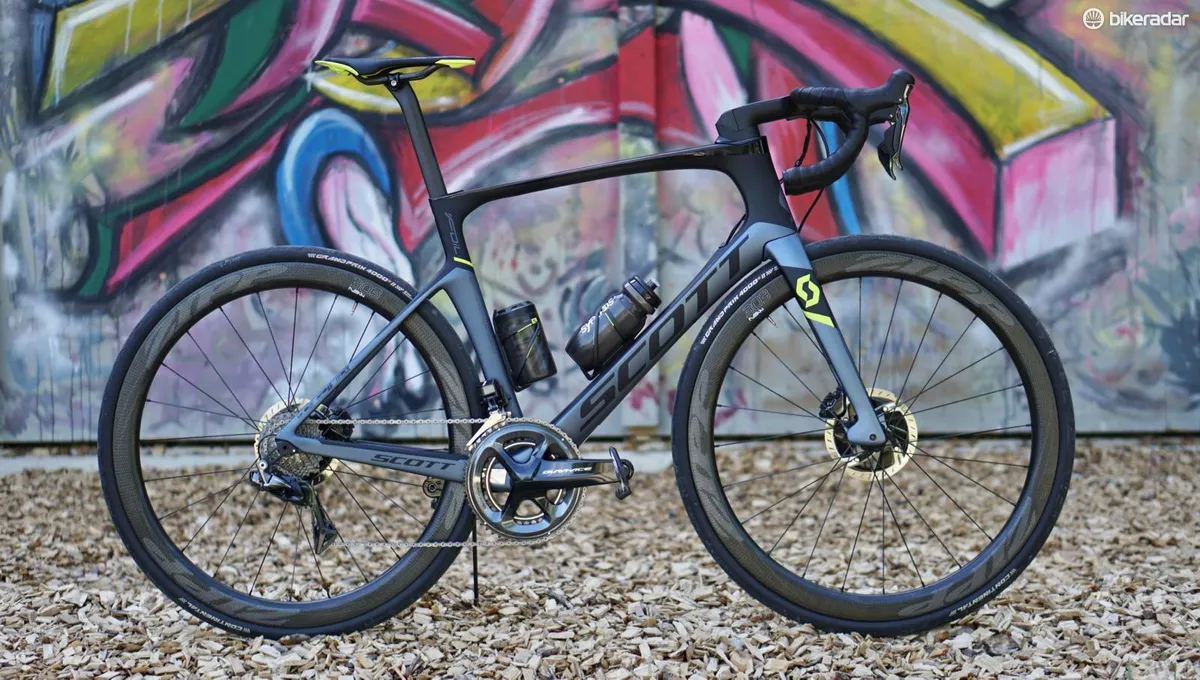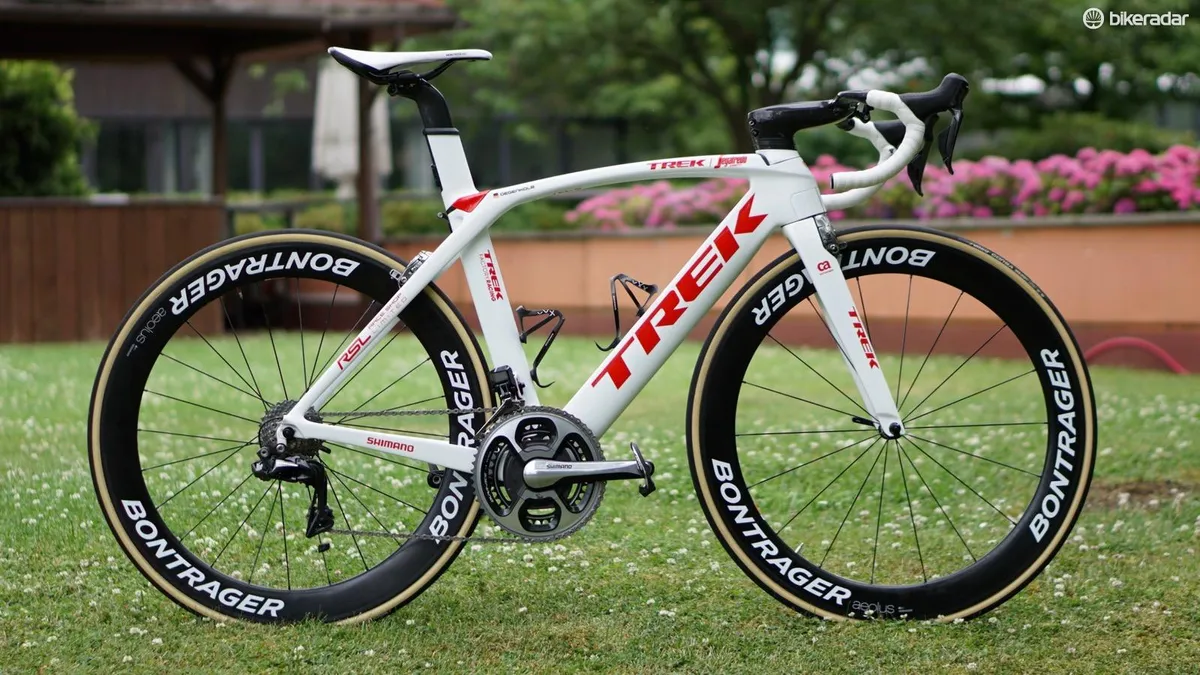To build a complete bike, brands can buy wheels and components from other companies, or use their own products. While house-brand pieces typically save a bike company money, some, such as Trek, Cannondale and Specialized, argue that their in-house stuff can be better than the component manufacturers' pieces. We explore the subject with companies on both sides of the equation.
- This feature was inspired by the Trek Emonda SLR Disc Project One, one of BikeRadar's Headline Bikes for 2018. We've collated 11 bikes that we believe you should know about in the coming year. Some are super bikes, while others might display great value for money, but they all have one thing in common – they're all important bikes that show how incredibly varied road and mountain biking is today.
What is a house brand?
Examples of house brands are numerous. Trek has Bontrager. Specialized has Roval. Fuji has Oval Concepts. Often, these house brands began as independent enterprises that were then bought and swept into the bike brand's family. Another way to do house-branded equipment is just using the primary brand, such as Specialized shoes or Giant wheels.
As the cycling industry matures, bike brands are looking for ways to save and make more money, as well as innovate with new designs.
As with most things in cycling, there's a wide range of quality and pricing for house brands. With entry-level bikes, you'll often find inexpensive house-brand components. But, increasingly, on high-end bikes we're now seeing house-brand wheels, stems, handlebars and more, many of which are quite good.
Mavic global brand manager Chad Moore recognises the trend toward more house-brand wheels on high-end bikes.
"I’d be lying if I said we weren't feeling the pinch," Moore said. "I think in two years the majority of the big brands are going to be making their own wheels. For big brands it used to be [that speccing someone else's wheels was] a selling point: 'this bike has Mavic wheels, or this bike has ENVE wheels'. Now it is getting to the point where brands actually have decent products. They are not bad."

"It sure as hell isn’t to make stuff cheaper"
Cannondale has two house brands, each with a different approach: the C-Series components are price-competitive pieces, while the System Integration (SI) parts are arguably as innovative as the company's bikes.
"Cannondale C-Series components offer a higher level of component at a given price than you could with an aftermarket branded piece," said Jeremiah Boobar, Cannondale's director of suspension and component development. "Our product managers define what they want from a part – weight, stiffness, shape, features and so on – and we work with vendors to produce parts to those specs.”
C-Series products go on bikes where affordability is the primary concern for a rider. On the other end of the spectrum, Cannondale's SI parts are often designed because there isn't something like it on the market.
“SI is a philosophy of looking at every part of the bike and developing it to best match the rider's needs, regardless of existing conventions and standards – to create something different and better," Boobar said. "From the first HeadShok back in ’92 through to the Lefty forks, OPI stems and HollowGram cranks and Spider Rings, making our own parts in the pursuit of higher performance has been part of our DNA. But it sure as hell isn’t to make stuff cheaper.”
Specialized takes a similar approach.
"Specialized components – like Specialized bikes – run the gamut from entry-level to full-tilt-boogie S-Works," said Specialized spokesman Sean Estes. "Roval is mostly expert level and above. We've talked a bunch over the years about how best to approach the equipment side of things – do you make tyres Roval instead of Specialized; do you make helmets, shoes and saddles something other than Specialized? There’s no perfect answer."
Perception vs performance and price
Scott Bicycles bought the Syncros brand in 2012 and specs its parts heavily across its road and mountain bikes.
Syncros marketing manager Niall Bouzon said having a dedicated product team results in products Scott couldn't get otherwise.
"Let’s be honest, the cycling public is more and more savvy, and not all house brands or all aftermarket brands are the same," Bouzon said. "There is an undeniable cool factor when you're a core, niche specialist brand and some of them are doing some super-cool stuff. And it’s true, some house brands are strictly business decisions aimed at capturing more margin."

"But in the end, quality and innovation are key. If the brand, house or not, is pushing forward, innovating and crafting serious products, riders notice," Bouzon said. "When you're building or upgrading a bike, it’s about getting the lightest and/or the best performance at a price. In the end, it’s the product not the brand and having the 360° view of the bike market from within Scott allows us to see the bigger picture in everything that we do. Our Syncros engineers are in the room for the development of bikes such as the new Scott Genius and it’s a collaborative project from initial drawings, not an afterthought."
At Trek, road director Jordan Roessingh said the company isn't focused on rider perception.
"Our focus is on the performance, quality and value of products that we deliver to our riders and not on rider perception of the brand. As long as we hold ourselves to the highest standards for those attributes, we’re happy to let people make up their own minds regarding the brand."
What do you think?
Are house brands on par with aftermarket brands? Are Bontrager and Roval wheels level with Zipp, ENVE or other dedicated wheel brands? Let us know in the comments below.
BikeRadar would like to thank Brittany Ferries, the Commune of Peille, France, and Kieran Page at La Maison des Activities de Pleine Nature de Peille for their help and support during our Headline Bikes test.

